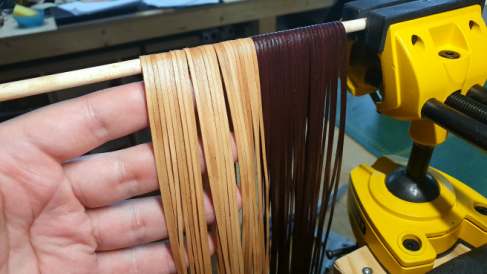
Whip anatomy can vary drastically depending on whip type, but one thing that remains constant is the thong: a braided portion of the whip that rolls out and creates a crack. The thong is typically comprised of multiple layers of braiding, called bellies, which give the whip an even taper and weight distribution.
See below for descriptions of some of the pieces that could make up your whip:
Handle: The place where the whip cracker is supposed to hold the whip.

Heel Knot/Butt Knot: The knot at the end of the handle.

Transition/Transition Knot: Where and how the handle connects to the thong.

Thong: The main, braided part of the whip, where the tapering occurs.

Fall hitch: The place where the fall is tied on to the end of the thong.

Fall: A piece of leather/nylon/etc near the end of the whip that the cracker is attached to.
Cracker/Popper: The small twisted piece of rope at the end of a whip that breaks the sound barrier.

Keeper/Keeper knot: The knot that attaches the thong to the handle on a stockwhip. This is comprised of two interlocking loops.

Core: The innermost part of the whip.

Belly: A layer of braiding inside of the whip.

Bolster: A strap of leather which wraps around the belly of the whip.
Binding: A wrap of sinew, string, or other material used to add stability and rigidity to the whip.

Overlay: The final layer of braiding on the whip, which is on the outside.

Plait/plait count: The number of strands in the overlay of the whip.

Nylon Paracord: A type of material used to make nylon whips. It is lightweight, waterproof, and requires almost no maintenance.

Roohide/Kangaroo leather: The best type of leather for making whips due to its flexibility and durability.


